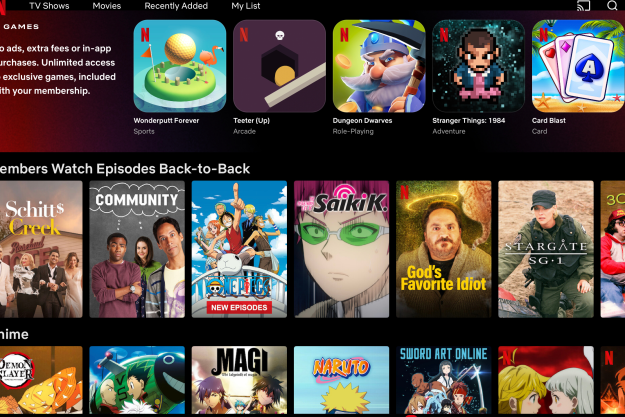As we are in the earliest stages of Netflix’s foray into the games, the company is still trying to discover what a “Netflix game” really feels like. We’ve seen ports of fun console beat ’em ups and enjoyable puzzle games, but I don't feel that those really define the platform’s emerging identity. Valiant Hearts: Coming Home, on the other hand, does. A sequel to a 2014 narrative adventure game set during World War I, it's a thoughtful and emotional journey that naturally reflects some of the film and TV content available on Netflix.
Valiant Hearts: Coming Home | Official Teaser Trailer | Netflix
It’s both highly educational and a solid sequel to one of Ubisoft’s most underrated games. Like Before Your Eyes, narrative is a clear priority, as is the distinct visual style that would work even if this was a traditional animated show. Netflix is known for evolving prestige TV and defining what storytelling in a streaming-focused series could be, so it would benefit from giving its exclusive games a similar focus. Valiant Hearts: Coming Home might not be a perfect game, but it’s a solid example of what a premier Netflix game could look like in the future.
War stories
Valiant Hearts: Coming Home, like its predecessor Valiant Hearts: The Great War, is a narrative-focused adventure game that hops between several stories from soldiers (and a medic) who served during World War I. Familiarity with the first game is helpful, as some characters reappear, but not necessary as the sequel tells a new story mainly focused on the Harlem Hellfighters, a group that fought with the French after the U.S. joined the conflict. It’s a story about the horrors of war and the family and friendships that wither through it all that focuses more on human stories rather than the bloody combat that games typically like to highlight.
While its story doesn’t feel quite as intertwined as The Great War’s, Coming Home is still enlightening, shining light on parts of the war that aren’t typically covered in your standard history class. I’d even recommend it as a good entry point for kids learning about World War I, especially because the game features plenty of collectible objects and facts that allow players to learn more about the battle. Like the best content on Netflix, it’s a creatively rich and additive experience.
It does all that with a minimalist style, as its characters speak in pantomime, only saying a word or two as a narrator eventually cuts in to fill in narrative blanks or give context on the state of the war. While it might seem disrespectful to represent such a brutal war in a cartoonish manner, the horrific moments stand out all the more clearly as a result. One particularly memorable set piece doesn’t contain any dialogue. It has the player walking across the bottom of the sea as you see bodies and ships from the Battle of Jutland sink to the seafloor. It’s equally awe-inspiring and horrifying, bolstered by Coming Home’s distinct visual style.
The gorgeous 2D art is colorful, looks hand-drawn, and almost feels kid-friendly despite how grave the subject matter it’s portraying is. Netflix is home to some great animation, so it would also make sense for that artistry to apply to its games. On the gameplay front, Coming Home is comparatively simple. Players use touch controls to easily walk around, climb, and interact with objects throughout the game to solve simple puzzles. Occasionally, some minigames with unique mechanics, like treating and patching up soldiers’ wounds, spice up the game. It is approachable in design and never particularly complicated, but that also means the gameplay never gets in the way of its storytelling and art.
The biggest downside to is that it’s regularly interrupted by loading screens. Even though they were very brief on my Google Pixel 7XL, they dampened some scenes’ artistic and emotional flow.
What makes a Netflix game?
Valiant Hearts: Coming Home is a beautiful narrative-focused game that feelsat home on Netflix. It demonstrates how titles with compelling stories can be just as engaging on a phone as they are on PC and consoles. That mentality is a perfect match for a platform that made a name for itself mostly through serialized, story-driven TV shows and movies, and now also offers games with strong stories like Desta: The Memories Between, Before Your Eyes, and Immortality.





